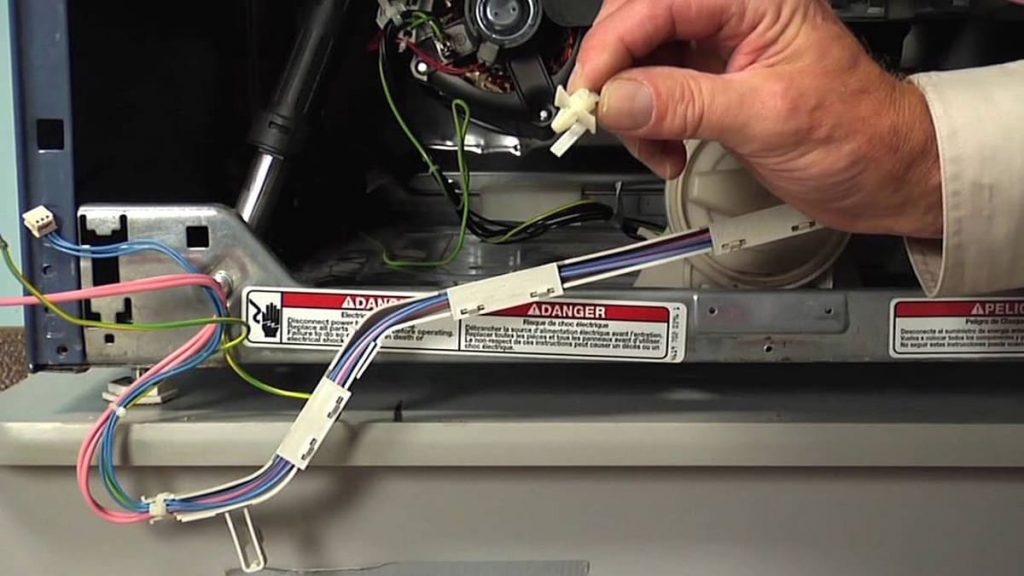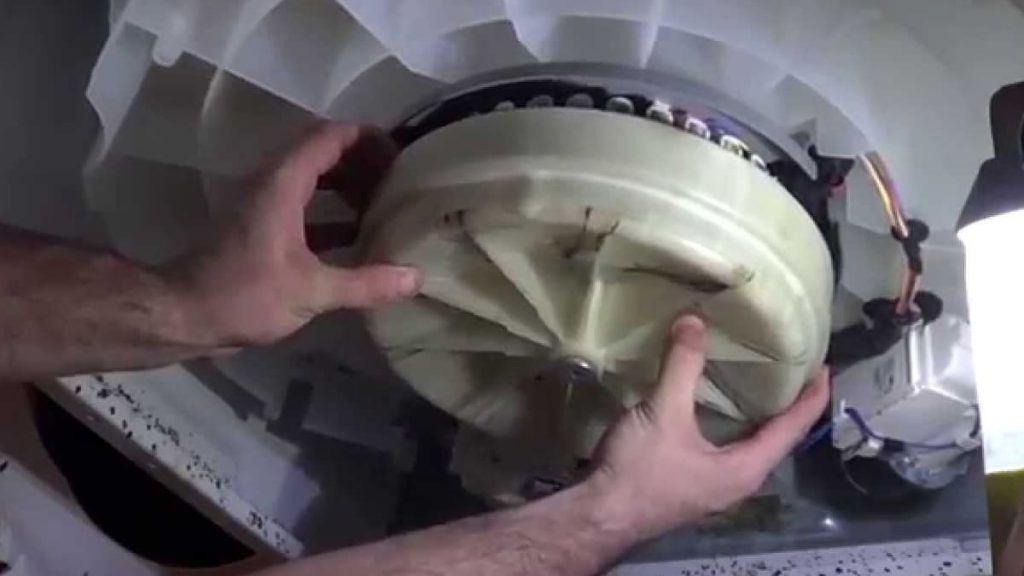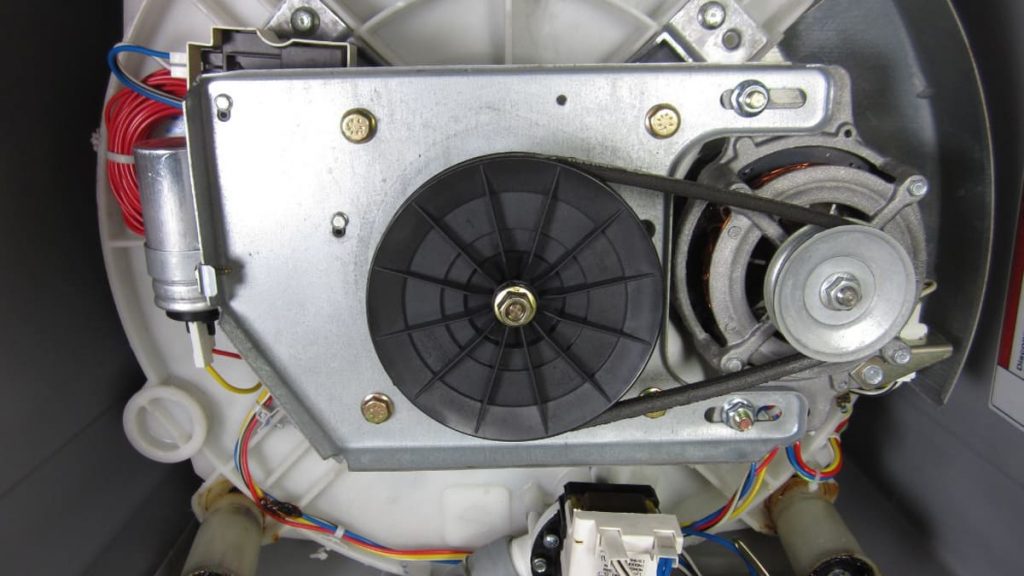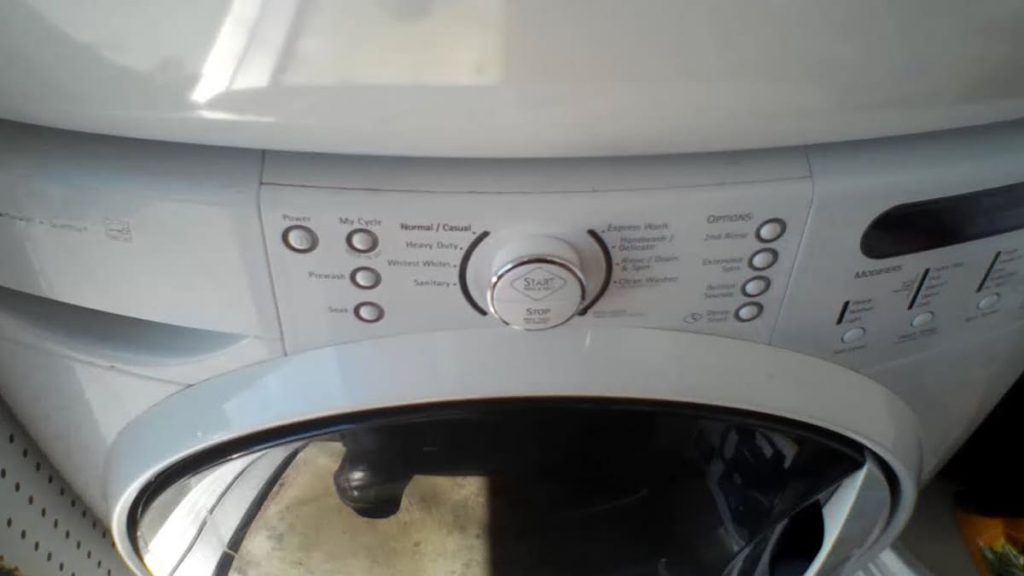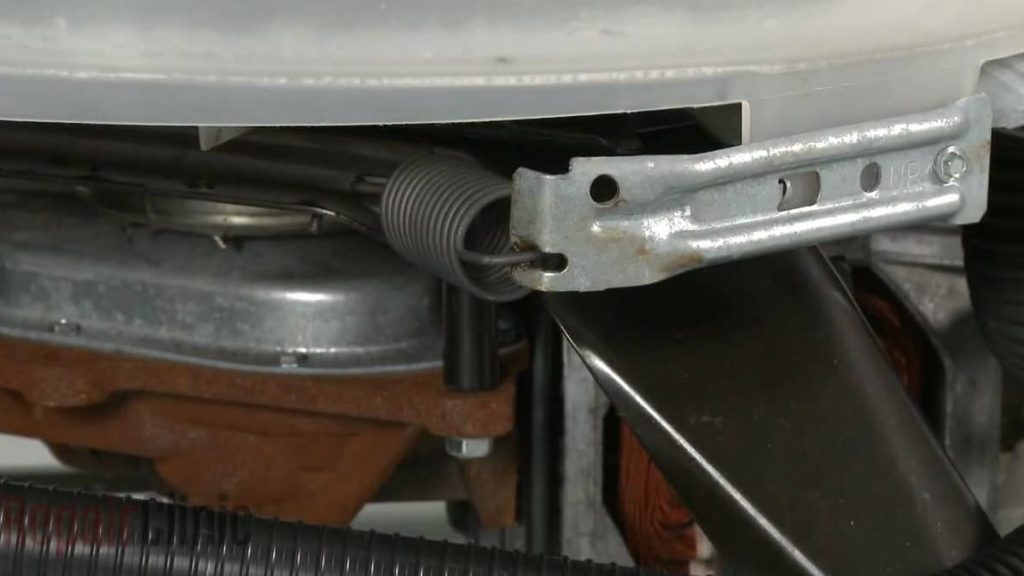The popularity of Kenmore brand washing machines is due to their reliability. Household appliances have a long service life, they are designed for serious loads, they serve for a long time without breakdowns. But, over time, like any technique, the machine can fail after prolonged use. Malfunctions do not always require a call to a specialist. Some breakdowns can be repaired independently. Let’s look at common malfunctions and their “symptoms”, and also learn how to repair a Kenmore washing machine with your own hands.
Drum not spinning
If you loaded the laundry, turned on the start, but the drum does not spin, do not panic. There may be several reasons:
- In top loading machines, the lid switch may be broken.
If the switch that fixes the lid is defective, the mechanism will not allow the drum to rotate in order to avoid injury. The same happens when the lid is open so that no one sticks their hand inside and does not get injured.
You can use a multimeter to check if the switch is working. If there is no continuity, then you need to replace it with a new one. After that, the malfunction will be repaired and the drum will start spinning again as expected.
- Loose or broken drive belt
The drive belt connects the engine and transmission. To make sure that this is the problem, you need to inspect it. If the drive belt is not tight enough or is completely torn, it can be replaced with a new one. When the drive belt is loose on the pulley, it can simply be tightened.
- Engine clutch failed (top loading machine)
The engine clutch connects the engine to the gearbox. If the washing machine is constantly overloaded, the clutch fails to protect the motor and transmission. Also, the clutch may fail as a result of natural wear and tear due to long-term operation of the washing machine. After replacing this element, the drum will spin as usual.
- Engine control board failed (mostly on new models)
The control board provides power to the motor. When it fails, the washing machine may not show any signs of life at all. You need to check the board for burnt elements. If you can’t find the defective items, you can replace the entire board. After that, the machine will work properly.
- Faulty gearbox clutch (top loading machine)
The tank and gearbox are connected by a clutch. It also helps the tank to gain the desired speed. When the transmission clutch wears out, the clutch does not work properly and the tank stops rotating. It cannot be repaired; a replacement part will be required.
- Problems in the interaction of the rotor and stator
The rotor and stator in the machine work together, creating an electromagnetic field that causes the tank to rotate in both directions. If the magnets are damaged, the drum will not spin. If the previous options have not been confirmed, then it is fashionable to check the stator and rotor for defects that prevent the washing machine from working. If the fault is in these parts, then replacement will also be required.
Kenmore washing machine makes loud noises
If during washing you began to hear extraneous sounds or an unusual rumble, noise, knock, then you should not ignore the problem. This is the first sign that there is some kind of malfunction in the washing machine. Check the following components and parts:
- Drum bearing
In the central part of the drum there is a bearing, which ensures smooth rotation of the inner tank. Sometimes it is enough to replace only the bearing, but often, due to natural wear, a complete replacement of the drum is required. If the bearing seal is worn, water can run through it, causing rust to form. The bearings will make a powerful hum, reminiscent of an airplane taking off.
- Drive pulley
A problem with a drive pulley could be cracked, bent, loose, or worn. This also leads to loud noises during the operation of the washing machine. If after inspection you find that the drive pulley is damaged, it needs to be replaced.
- Drive belt
The drive belt wears out over time. As a result, it may break. This will also cause a loud sound. To do this, inspect the drive belt. If there is damage or breakage, you need to replace the part with a new one.
- Clutch
A malfunction in the clutch can lead not only to the fact that the washing machine drum stops spinning, but also to incomprehensible new sounds after the spin cycle. The sound will be similar to the grinding of metal. If you encounter such a problem, you need to check the clutch. Damage to this part will require the replacement of defective parts.
- Drain pump
If the noise appeared while draining the water from the washing machine tank, then the problem must be sought in the drain pump. It could be a breakdown or blockage. You need to get to this part, clean it of debris, make sure that there is no blockage. After that, you need to try to turn on the drain again. If the noise remains, then the pump will need to be replaced with a new one.
Kenmore washing machine won’t start
When your washing machine stops showing signs of life at all, the breakdown can be serious. For self-troubleshooting, you need to pay attention to the following items:
- Drive unit (top loading machine)
The drive unit connects the drum to the transmission. When it wears out, the transmission shaft continues to work, and the drum does not spin. The drive unit should be inspected for damage. If the machine is very old, then most likely the part has simply worn out. You will need to replace the drive unit with a new one and there will be no problems with its performance.
- Motor coupling
The engine clutch must connect the transmission to the engine. When the washing machine is overloaded, the clutch fails to protect the engine from damage. If the machine does not start, you need to make sure that the engine clutch is really out of order and replace it.
Drain not working in Kenmore washing machine
When at the end of the wash you notice that the machine does not drain the water, the breakdown can be either minor or serious. Pay attention to the following items:
- Drain pump or hose
The drain pump or hose may simply become clogged. Determining whether the cause is really a blockage is quite simple. You need to disconnect the drain hose and check it, also clean the pump. If debris is found that interferes with the operation of the machine, it must be removed. If there is damage to the hose or pump, these parts must be replaced with new ones.
- Coin trap or filter
Some Kenmore models have special filter traps for coins and small items. This prevents debris from flying through and into the pump. Periodically, these filters should be checked and cleaned, as accumulated debris can become an obstacle to draining.
Kenmore washing machine shakes or vibrates
“Dancing” cars, especially during the spin cycle, are not uncommon. Often the problem is that the equipment is installed on an uneven surface, and its legs are not adjusted. But if everything was in order before, and now the machine is shaking and vibrating strongly, the problem may lie in the following elements:
- Shock absorbers
For long-term operation, the parts and components of the washing machine wear out. Shock absorbers are no exception. You need to find them in the typewriter, inspect for damage. If this version is confirmed, then you need to replace the faulty shock absorbers with new ones. It is advisable to update everything at once so that the problem does not appear again soon.
- Hanging rod
When one or several suspension rods fail, the machine begins to shake violently. It is they who dampen the vibration from the rotating drum during the washing or spin cycle. To verify the problem, you need to check the rods for damage. Defective and damaged parts must be replaced with new ones. After that, the machine will stop shaking and vibrating strongly.
- Counterweight spring
Another cause of increased shaking and vibration can be a faulty counterweight spring on the washer. They also act as shock absorbers. A broken spring stops damping the vibration. To find the problem, you need to inspect the springs, broken and rusty ones need to be replaced.
- Leveling foot
Another reason why you can notice strong shaking and vibration is that the legs are not adjusted or have changed position over time. It is important to adjust them under the surface. If the floor is too uneven, then use an additional, more even coating. Then adjust the legs.
Kenmore washing machine slowly fills with water
We noticed that the machine began to fill up slowly, there can be only two reasons for this:
- Water outlet valve
The outlet valve during the wash cycle opens under water pressure and the machine fills up. If the valve is faulty, the machine will fill slowly or no water will flow at all. First you need to check and clean the meshes inside the ports, at the junction of the hoses. If this does not help, then replace the valve with a new one.
- Low water pressure
Before disassembling the machine and looking for malfunctions inside the equipment, first check the water pressure in the system. If it is too low, then the valve will simply not respond. It needs 9 kg for every 2.5 square centimeters in order for it to work properly.
Kenmore washing machine leaking
Leakage problems can be a big problem. If you ignore a small puddle, a real flood may await you in the future. If the washing machine starts to leak, the problem may be in the following elements:
- Drain pump
A faulty drain pump may leak water if it is damaged, such as cracked. Also, during operation, the connected hoses may loosen, so they should also be checked. To fix the problem, you will need to replace the drain pump.
- Tank bearing seal
The drum bearing seal may be torn or worn, resulting in leaks. Inspect the bearings, if everything is in order with them, then only the seal can be replaced. If the bearings have had time to rust, then they also need to be replaced.
- Drain hose
The drain hose can also leak. If there is no damage on it, then you need to check the junction of the hose with the machine. Replacement is not always required, you need to look at the situation.
- Water inlet valves
The most common cause of leaks. You need to check the inlet valves of the washing machine. They may not work properly and not close completely, because of this, water from the machine begins to leak. Replacing the non-working intake valves will solve the problem.
If you own a Kenmore washing machine and are experiencing one of the problems listed here, use our tips to fix the problem yourself. Some malfunctions require a partial analysis of the equipment, therefore, if you are not confident in your abilities, it is better to call a specialist. But many minor breakdowns can be repaired with your own hands.

